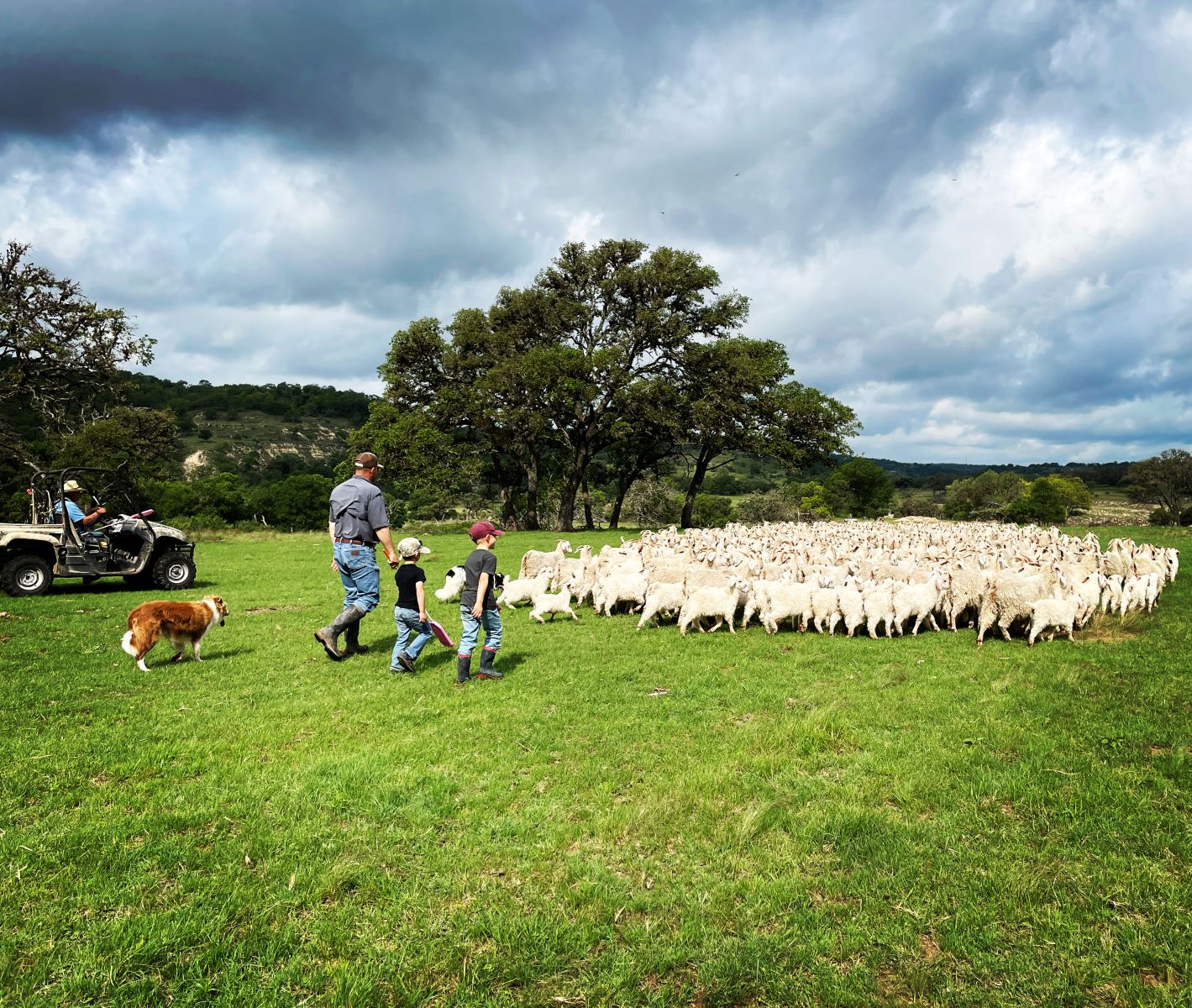Summer started off with working cattle. Pasture by pasture, bulls, cows & calves were gathered.


Calves are about four months of age when they are worked for the first time {ear tagged, vaccinated, treated for internal & external parasites, castrated}. Bulls & cows also received a round of vaccinations.
Vaccinating calves at an appropriate age is important to build a healthy immune system to fight diseases. Cows & bulls receive vaccinations for reproductive diseases & as annual boosters to vaccinations they received as calves.


Ear tags provide proof of ownership & associate a calf to a specific cow. With an ear tag in their ear, calves can then be paired up to their dam. Knowing the sire & dam of a calf is extremely important in making decisions down the road {keep vs sell}.





Calves, cows, & bulls are all treated for internal & external parasites through a pour-on solution applied across their back.

Most bull calves are castrated, while some are kept as bulls {for our own breeding purposes or to be sold to other cattle producers}. Since the calves are so young & there are no records other than dam & sire, eye appeal & temperament are the greatest factors that go into selecting ‘keeper’ bulls. There are several benefits to castrating bull calves that
are not going to be used in a breeding program. Castration reduces aggressiveness & sexual activity by lowering testosterone levels. It also creates a higher quality carcass-more consistent, marbled, & tender beef. Steers are much easier to handle. Bulls tear up
facilities & injure each other fighting, which is why keeping bull numbers at a minimum is important.






Lambs were gathered & weaned in mid-July to early August.
Lambs were worked {ear tagged, drenched, vaccinated} & put in the feedlot. Lambs recievd a preventive vaccine against enterotoxemia, combined with long term protection against tetanus.







Enterotoxemia, also known as overeating or pulpy kidney disease, is a condition caused by Clostridium perfringens type D. These bacteria are normally found in the soil & as part of the normal microflora in the gastrointestinal tract of healthy sheep & goats. Under specific conditions, these bacteria can rapidly reproduce in the animal’s intestine, producing large quantities of toxins. The epsilon toxin produced by C. perfringens Type D is the most significant toxin in producing the disease. Young animals are most susceptible. Sudden & high mortality rates may occasionally occur in lambs & kids. Although adult animals are also susceptible to enterotoxemia, they develop immunity due to frequent exposure to low doses of these toxins. source: University of Georgia, College of Veterinary Medicine
Lambs are eating a prepared ration in the feedlot. This same ration was available to them while they were still at their mother’s side in the pasture. Lambs learned to eat feed with their mothers & therefore transitioned into feedlot life very smoothly.
Having the lambs on feed close by keeps them away from coyotes, allows us to easily monitor them on a daily basis & makes them readily available to sell.


Billies received their annual haircut at the end of July. Billies are shorn once a year, while nannies & muttons are shorn twice a year.
Why are billies only shorn once a year? Billies are put out with nannies for breeding season in early November. All of their energy goes into breeding. They hardly eat & become rather weak. With a shortage of nutrition being consumed, they aren’t growing much mohair. Being weaker & a lack of mohair makes for an undesirable time to shear them when nannies are shorn in February/March {just before kidding}.




The day before billies were shorn, yearling billies were sorted through. A handful of the group were selected as keepers, while the rest {about 175} were shorn & clamped/castrated.




Muttons are male goats that have been castrated. We castrate them with a burdizzo. A burdizzo is a device that has a large clamp designed to break the blood vessels leading to the testicles. Once the blood supply to the testicles is lost, necrosis occurs & the testicles shrink, soften & eventually deteriorate completely.
Muttons are beneficial for several reasons. Since they are big & strong, they are not as susceptible to predators. Coyotes are opportunistic & prefer young lambs & kids rather than a stout mutton who is ready to fight. Muttons do not reproduce so they can run with nannies at any given time. And since they don’t reproduce, their nutrition maintenance requirements are less. Consequently, they are able to grow more mohair per year because all of their nutrition goes into growing hair instead of reproduction efforts. Since their nutrition requirement is less, you are able to run more in a pasture at a given time which means greater Ashe Juniper {cedar} control.


This summer has been full of extremely hot days & very little rainfall. To date, we have received about 5.5-6″ of rain for the year. 2011 was a year similar to this one. We received about 11″ of rain in 2011.
Thankfully the livestock are doing pretty well. Cows are hustling & finding green on the hillsides. Sheep & goats do well when it’s dry since stomach worms cannot thrive in this kind of weather. These internal parasites require moisture for their development…& they’ve been out of luck for quite some time now! As tanks dry up, some goats are finding themselves stuck in the mud trying to get a drink. Checking the tanks with some water still in them has become an important daily task.
Small showers here & there have kept us going & are much appreciated! The forecast for the next seven days has the most rain chances in it that we have seen in a while. We are hopeful & continuing to pray that things start to change as we head into Fall.














